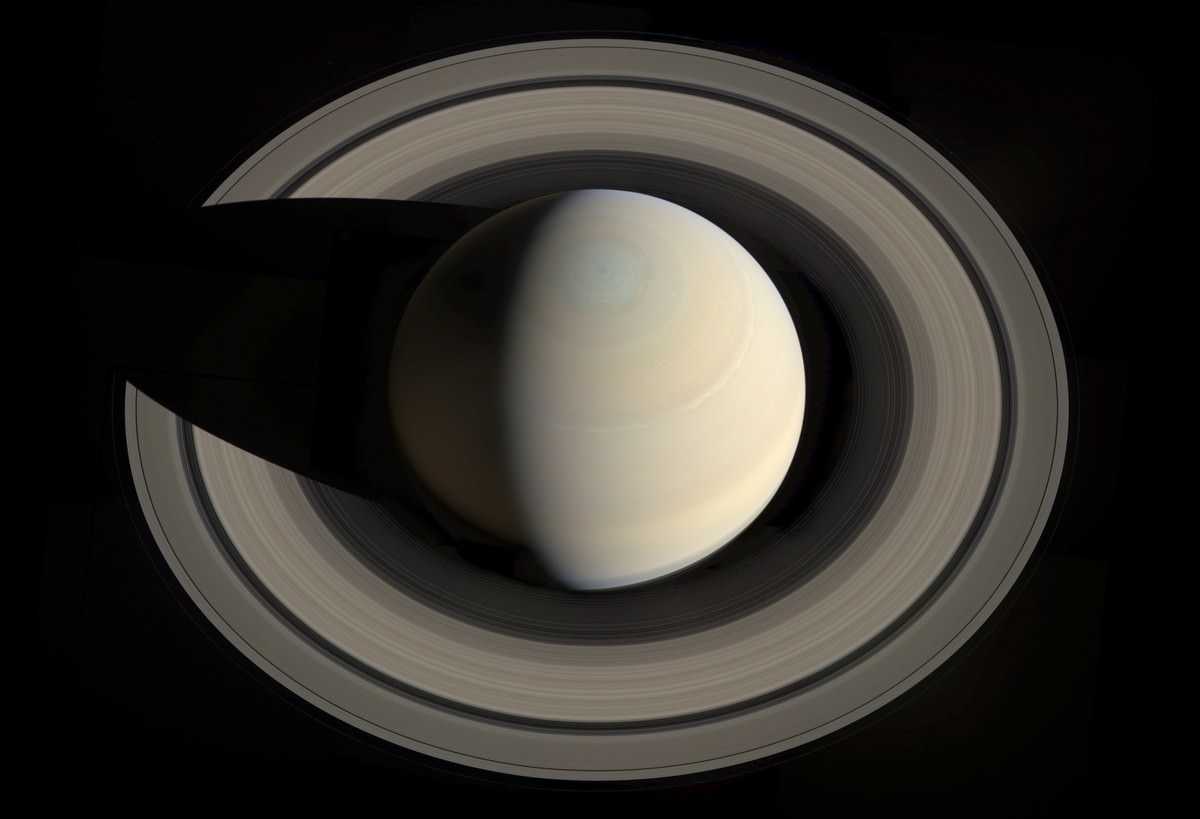So what did NASA do during the US government shutdown? You can’t just turn off spacecraft that are operating millions of miles away, so missions like the Mars rovers and the Cassini spacecraft at Saturn continued to send back images to Earth during the 16 days that most of NASA wasn’t up and running like usual. On October 10, 2013, as Cassini flew high above the planet’s equatorial plane, the spacecraft’s camera took 36 images of Saturn, a dozen each using the various red, green, and blue filters used to create color images. The images were transferred back to Earth and put on the Cassini raw images page. Gordan Ugarkovic from Croatia, and a member of the image editing wizards at UnmannedSpaceflight.com, grabbed the raw files, processed them, then assembled the images into this jaw-dropping mosaic.
This is a view from Saturn that we could never get from Earth; only a spacecraft orbiting the planet could take it. You can see the north pole and the swirling maelstrom of clouds that creates the hexagonal polar vortex, the thin bands in Saturn’s atmosphere, and — of course — what really stands out is the incredible view of Saturn’s rings. To see the original 3 MB version, see this page on UMSF.
“You shouldn’t be surprised to see processing artifacts here and there,” cautioned Ugarkovic via email to Universe Today. “It is, after all, based on raw JPEG images only.”
See more of Gordan’s work at his Flickr page.
You can read more details about this from Emily Lakdawalla at the Planetary Society, or Phil Plait at Bad Astronomy/Slate.
But in the words of UMSF’s Astro0, “That’s the sort of view I’ve dreamed I would only ever see in a science fiction movie or if we had some kind of amazing futuristic spacecraft orbiting around that distant ringed planet….WAIT! We do!”
For more of what NASA did during the shutdown, Bill Dunford at Riding With Robots put together a great summary, quoting the @SarcasticRover that “You can’t shut down awesome.” Bill started the #ThingsNASAMightTweet hashtag that reminded everyone of all the things NASA does, but they couldn’t tweet about during the shutdown. People from around the world chimed in, adding what was important to them about NASA, and as of today, tweets with that hashtag have passed 27 million impressions.


there are three identical stars likened up and as i look below that can see a bright planet that gos west at 5 am is this saturn or jupter.